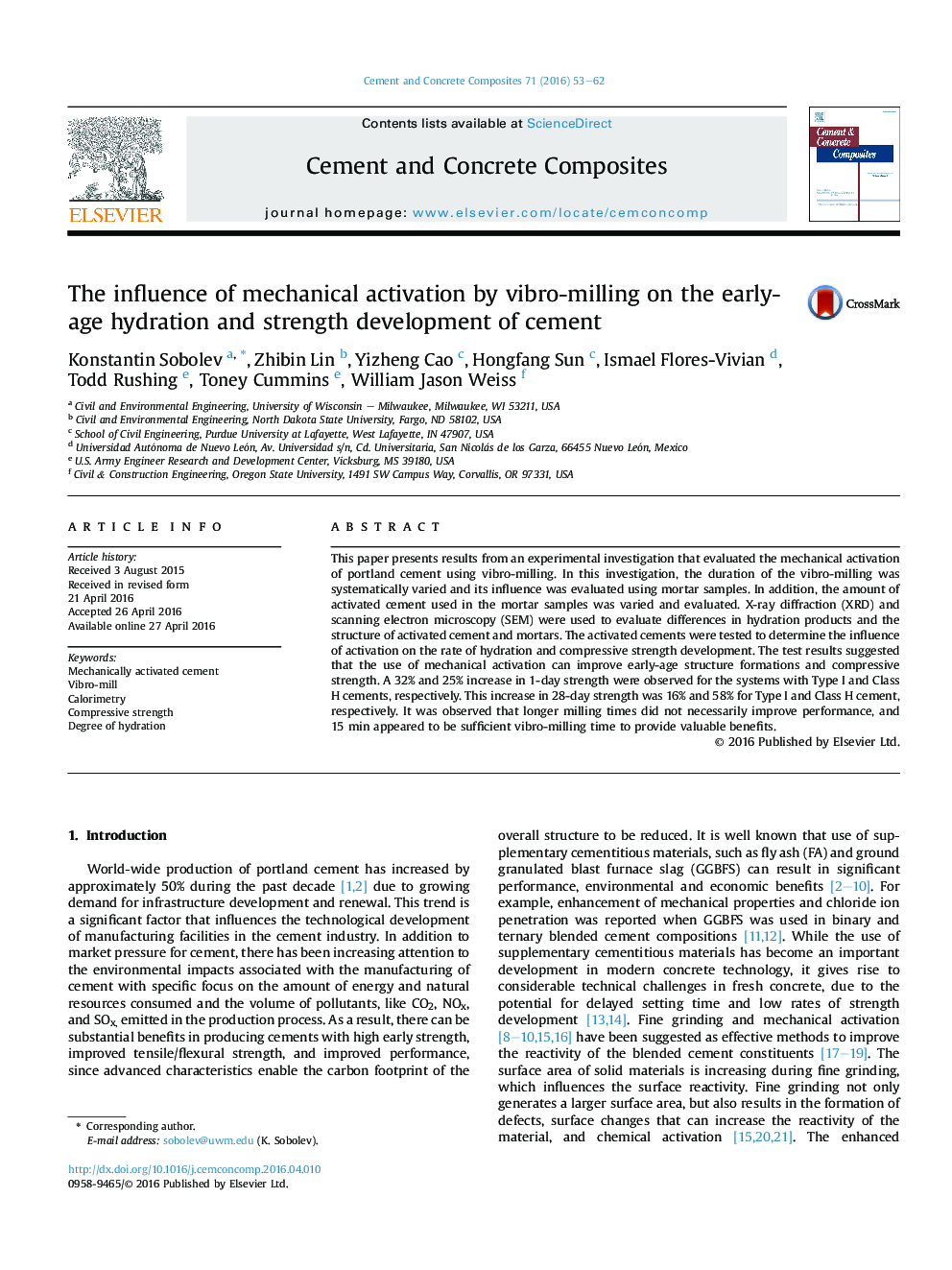| Article ID | Journal | Published Year | Pages | File Type |
|---|---|---|---|---|
| 1454310 | Cement and Concrete Composites | 2016 | 10 Pages |
This paper presents results from an experimental investigation that evaluated the mechanical activation of portland cement using vibro-milling. In this investigation, the duration of the vibro-milling was systematically varied and its influence was evaluated using mortar samples. In addition, the amount of activated cement used in the mortar samples was varied and evaluated. X-ray diffraction (XRD) and scanning electron microscopy (SEM) were used to evaluate differences in hydration products and the structure of activated cement and mortars. The activated cements were tested to determine the influence of activation on the rate of hydration and compressive strength development. The test results suggested that the use of mechanical activation can improve early-age structure formations and compressive strength. A 32% and 25% increase in 1-day strength were observed for the systems with Type I and Class H cements, respectively. This increase in 28-day strength was 16% and 58% for Type I and Class H cement, respectively. It was observed that longer milling times did not necessarily improve performance, and 15 min appeared to be sufficient vibro-milling time to provide valuable benefits.
